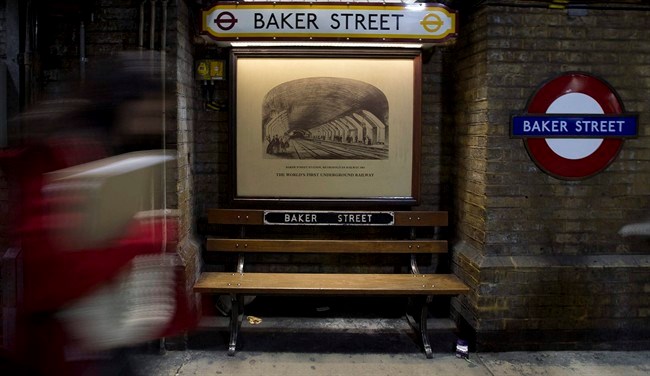LONDON - Busy, congested, stressful. This is how the world's first subway system was depicted by London newspapers in 1863. It's a situation that would be familiar to nail-biting passengers of the present as the Tube turned 150 years old Wednesday.
"The constant cry, as the trains arrived, of 'no room,' appeared to have a very depressing effect upon those assembled," The Guardian newspaper reported on the public opening of London's Metropolitan Line on Jan. 10, 1863. The first stretch of rail had opened the day before, on Jan. 9.
The line — the first part of what is now an extensive London transport network that has shaped the British capital and its suburbs — ran 120 trains each way during the day, carrying up to 40,000 excited passengers. Extra steam locomotives and cars were called in to handle the crowds.
Architectural historian David Lawrence said the rapid expansion of the subway network — better known in London as the Tube — had a major impact on the city's design. The Tube helped lure people away from the inner city into new areas where new housing was being built near the stations.
The houses were built in a village style mocked by some historians as already dated.
"They were selling an England which had already passed by that time," said Lawrence, a principal lecturer at Kingston University.
In 1919, the Metropolitan company became directly involved in developing what came to be called "Metro-land" on surplus land. One of the company's promotional posters displayed drab rows of inner city terrace houses and urged people to, "Leave this and move to Edgware."
However, they were also selling the dual benefit of a quiet, unpolluted suburban life paired with rapid access to the cultural and economic benefits of the metropolis, Lawrence said.
The pioneering Metropolitan Line sparked a new wave of underground development which today has grown into a 249-mile (402-kilometre) system carrying 1.2 billion passenger journeys each year.
Although Londoners love to complain about its sometimes sketchy performance, the Tube and its related rail lines can be a remarkably efficient way to move vast numbers of people in and out of the city, with roughly 3.5 million journeys completed each day. It provided nearly flawless transport during the recent London Olympics despite fears that it would buckle under the extra strain.
Charles Pearson, a lawyer who saw the line as a tool of social reform which would enable the poor to live in healthier surroundings on the perimeter of the city, began promoting the line in the 1850s.
Pearson made a crucial contribution by persuading the Corporation of the City of London — the governing body of the financial district — to invest in the line.
Like many an innovation, the proposal to build a three-mile (4.8 kilometre) underground rail line from Paddington Station in central London to Farringdon on the edge of the financial district in the east aroused great skepticism and criticism when it was first proposed.
An editorial in The Times of London at the time found the concept repulsive: "A subterranean railway under London was awfully suggestive of dank, noisome tunnels buried many fathoms deep beyond the reach of light or life; passages inhabited by rats, soaked with sewer drippings, and poisoned by the escape of gas mains," the newspaper declared.
"It seemed an insult to common sense to suppose that people who could travel as cheaply on the outside of a Paddington bus would prefer, as a merely quicker medium, to be driven amid palpable darkness through the foul subsoil of London."
London's Daily News took a more macabre view: "For the first time in the history of the world men can ride in pleasant carriages, and with considerable comfort, lower down than gas pipes and water pipes," the newspaper said, adding, "lower down than graveyards."
For the anniversary celebrations, Transport for London will run old-style steam powered trains underground — but only on Sunday, so as not to disrupt its crucial people-moving function during the working week.


